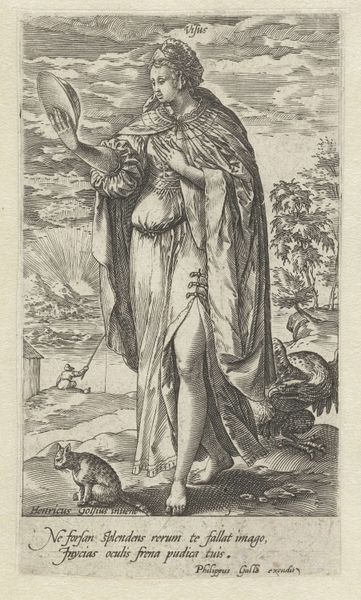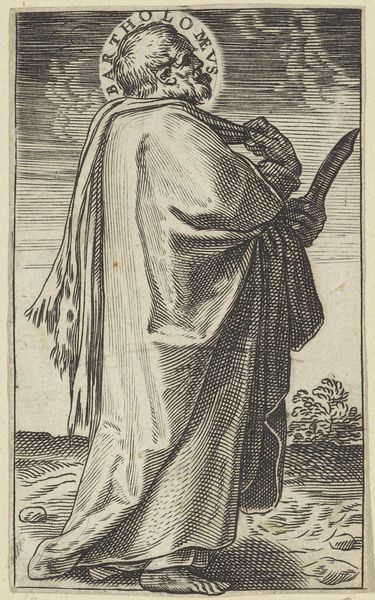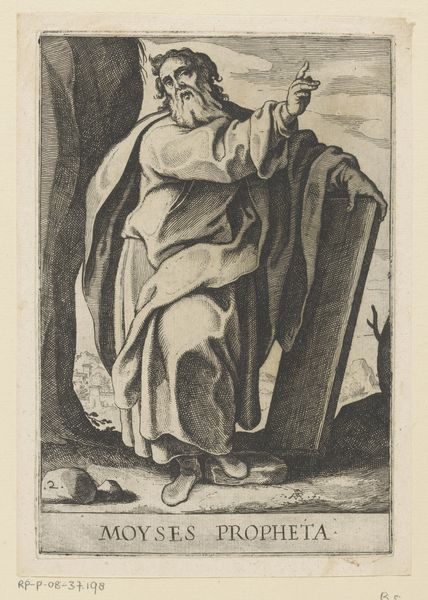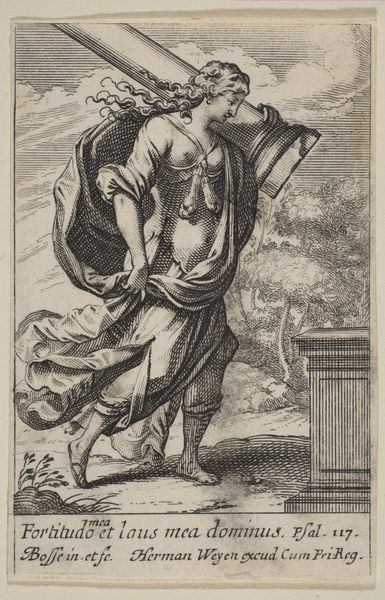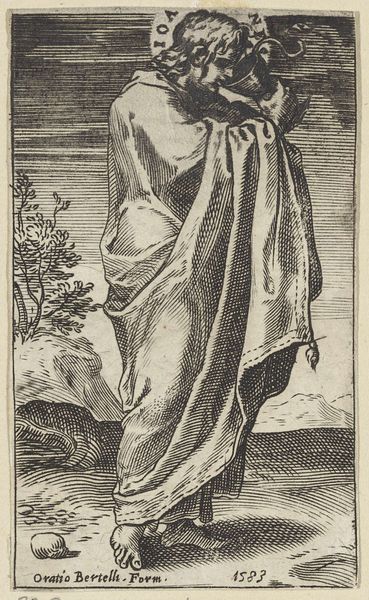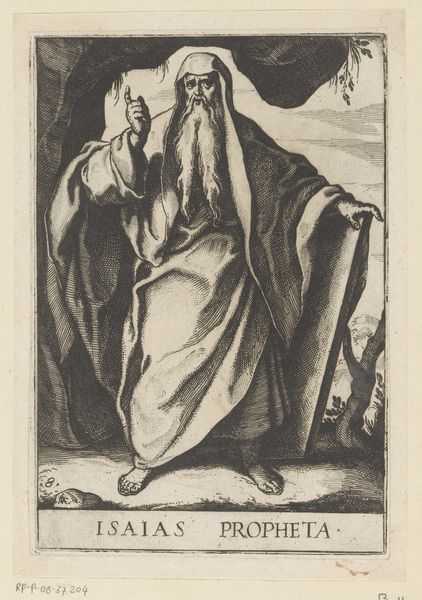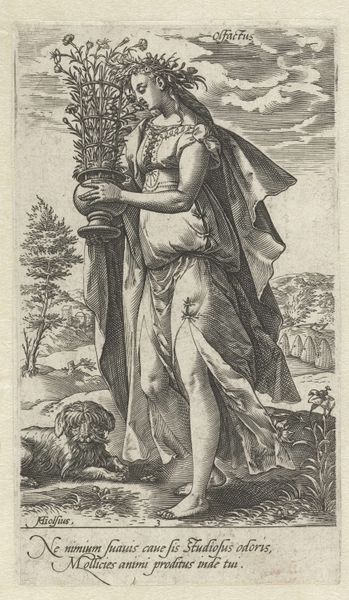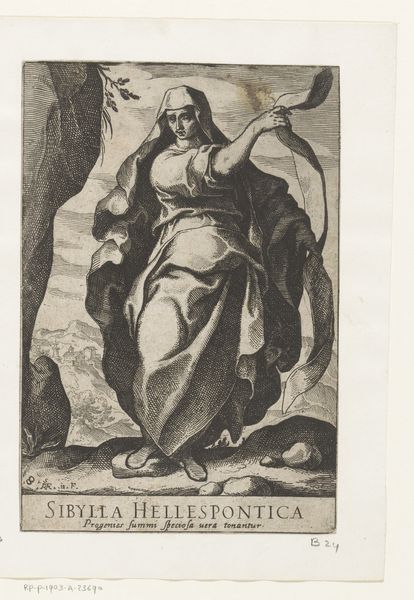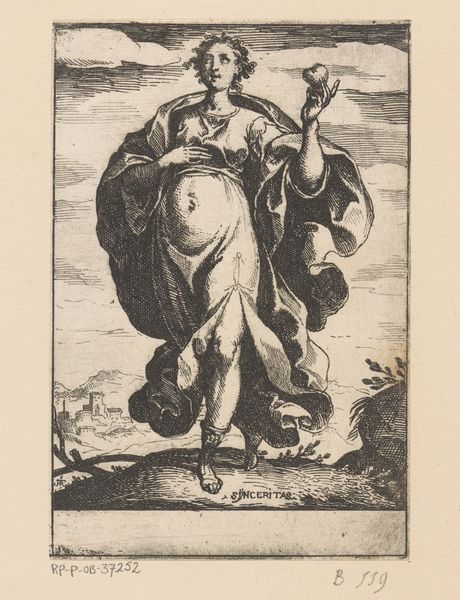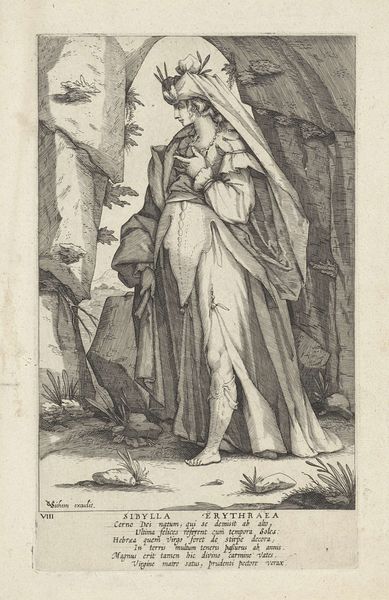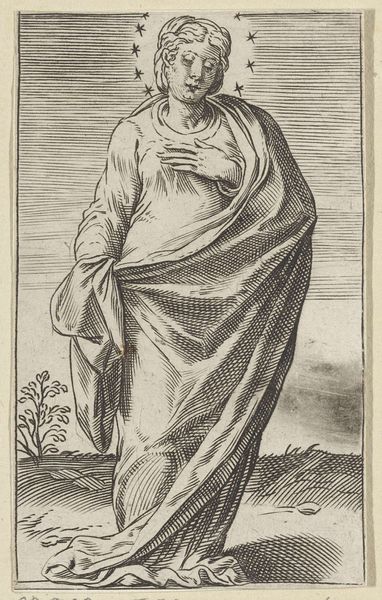
drawing, print, etching, engraving
#
portrait
#
drawing
#
allegory
#
baroque
# print
#
etching
#
figuration
#
line
#
history-painting
#
engraving
Dimensions: Sheet (trimmed): 2 15/16 × 1 15/16 in. (7.5 × 4.9 cm)
Copyright: Public Domain
Curator: This is "Temperance," an engraving and etching by Abraham Bosse, created in 1636. You can find it at the Metropolitan Museum of Art. Editor: It’s…austere. The figure, draped but bare-breasted, looks like she’s stepped out of an ancient myth. And the starkness of the engraving—so much contrast. You can really see how Bosse manipulated the line to create form here. Curator: It's an allegorical representation, part of a larger series on virtues. Consider the political climate of 17th-century France. The rising merchant class, increasing social tensions…Bossee aimed to reflect moral ideals through these images, influencing social behavior. Editor: That’s fascinating. But I also can’t help but notice how the tooling of those fine lines would have required extreme skill. You can feel the control he had over the burin as a material. And the textures of that fabric. The folds feel almost tangible given they’re just variations in width and pressure. Curator: Precisely. Prints like these were widely disseminated, affordable ways to educate and promote virtuous living. Etchings and engravings, compared to, say, paintings for aristocratic patrons, reached a broader audience, subtly shaping societal norms. Editor: I am drawn to how those methods, etching, engraving, and their materiality helped popularize virtues, right, But were printmakers like Bosse viewed as craftsmen, mere technicians, or celebrated artists? How did labor conditions inform that? Curator: Ah, the million-dollar question! The lines were often blurred. While prints certainly had a commercial aspect tied to their reproduction and distribution, skilled printmakers like Bosse achieved considerable recognition in artistic circles. His skill at translating the aesthetics into more publicly available artworks secured that notoriety. Editor: Ultimately, though, Bosse’s ‘Temperance’ intrigues because the means by which it was brought to the public eye, the tactile labour inherent in those precise marks on metal, profoundly impact our perception of it, in addition to everything else. Curator: A thought-provoking conclusion. Considering all its complex socio-political factors, "Temperance" encapsulates the spirit of its era while offering a timeless perspective on societal ideals.
Comments
No comments
Be the first to comment and join the conversation on the ultimate creative platform.
